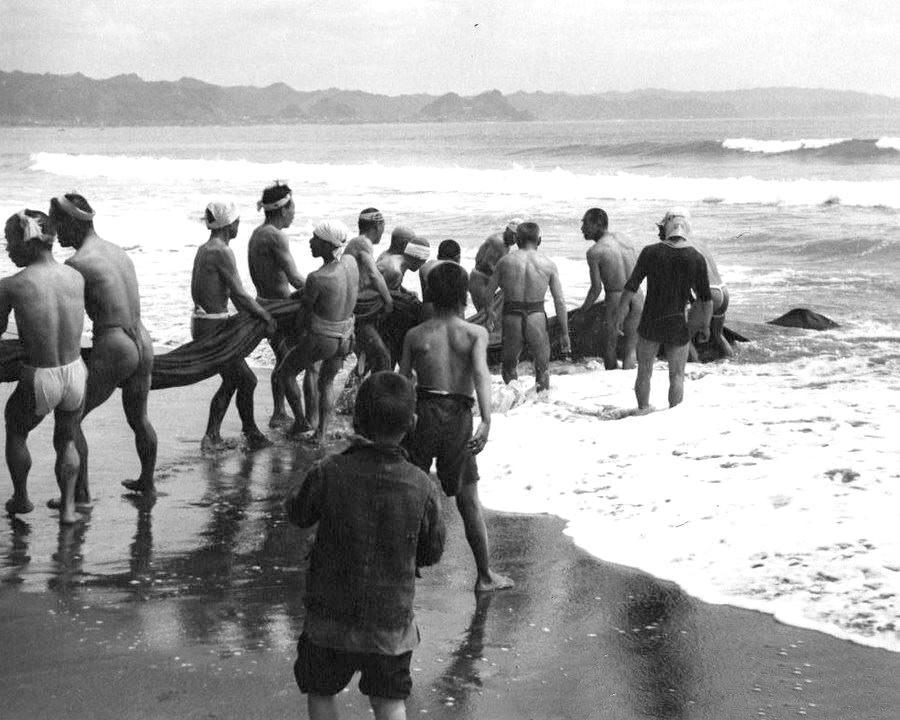
Figure 1.--The photo shows a group of Japanese inshore fishermen on Shikoku Island during the 1950s. Shikoku is the smallest and least populous of the four main home islands. It is located in the south, south of Honshu and east of Kyushu. |

|
From an early point, seafood was preferred to meat by the Japanese. To raise meat you had to either feed animals or devote large areas to pasture. Seafood in cojntrast could be gathered or taken in Japan's rich coastal waters. The introduction of Buddhism only reinforced alread existing trends (6th century AD). Buddhism discouraged the killing of animals and birds, but not fish. There is a long history of fishing nd the fishing industry in Japan. Yhere are reports of gisheris management dating to the medieval period (8th century AD). This was something organized by the fishermen themselves. [Makino] At the time of the Meiji Restoration, Japan's fishing industry was still basically artisanal. Japan’s ultra modern fishing industry of today was built on technology it imported from Europe and the United States. Japan’s begining steps toward modernization was constrained by a series of unequal trade treaties it had to sign after the opening of Japan by American Cimmodore Perry (1853). his was with the British, Americans, and Russians. Japan at the time had no modern ships meaning iron hulls or steam power or the ability to build such ships. As a result, when the Meiji era modernization began (1880s), most of the country's trade and coastal shipping was conducted by foreign companies. This forced Japan into hat one historian called a 'third world' relationship with the West, especially concerning the all important area -- manufacturing. [Halliday, p. 52.] Japan at this beginning stage couldn’t very well impose protectionist tariffs on imports because it did not yet have an industrial manufacturing sector to protect. The Meiji planners had at first focus on niche areas and on areas that it had a clear advantage such as very low labor costs. The most important niche was the countries fisheries and the coastal marine environment. The first major steps toward a more modern fishing industry was taken by a few intrepid individuals who traveled to the West to learn about modern high-seas fishing methods which with the advent of steam power primarily meant trawling. The most important was Kosuke Kunishi from a samurai family. He went to Britain and Germany (1887). He began at the bottom, working as a sailor and fisherman on a trawler. He brought knowledge of high-seas trawling home when he returned to Japan. He was followed more than a deade later by Kamezo Okuda, also frm a samurai family. He went to Britain (1902). He focused ion trawling methods which were advancing with the greater power of engines. He oversaw the construction of sh trawl methods. When he returned, he built the 152-ton Kaiko Maru and inaugurating Japanese off-shore trawl fishing with European technology. The Japanese imported a British trawler (1908). The Government financed the building of a copy in Japan's developing ship-building industry. From those early begining. trawl fishing grew rapidly. With Japan's expanding industrial cities, there was a ready market for the expanding catch. Japan's trawler fleet totaled 136 ships (1912). As in the West, conflicts began with the existing inshore fishery. The government began to closed off coastal areas areas to the trawlers and terminate subsidies as the trawler fishermen no longer required Government promotions. There were important social destictions. Women played an important role in the inshore fishery, notably diving for shellfish. The offshore trawl fishery was a higher status occupation and an all-mke undertaking. Fishing with the contribution of rhe trawler fisermen became an even more important contribution to the Japanese diet. The industry was virtually destroyed during World War II. The United States heavily bombed Japanese ports and attacked virtually anything that floated. This added to the developing food crisis because food imports had been largely cut off by the American submarine campaign and the virtual destruction of the maru fleet. After the War, a priority for the American occupation was to increase food production. The major step was land reform to improve agricultural yields. Reviving the fishing industry was another important step. Here the country had the experienced fishermen and technology. All they needed was the ships. And this very quickly occurred as Japanese shipyards were rebuilt and began to function again. As part of the drivecto produce more food, an all new fishery was launched--whaling. Longlining also became imprtant as well as aquaculture.
Collingham, Lizzie. The Taste of War: World War II and the Battle for Food (Penguin Books: New York, 1962), 634p.
Halliday, Jon. Makino M. "A brief institutional history of Japanese fisheries management," Fisheries Management in Japan Fish & Fisheries Series, Vol. 34. (2011).
Myers, Ramon h. and Yamada Saburo. "agriculture develoment in the Empire,' in Ramon H. Myers and Mark R. Peattie,' The Japanese Colonial Empire, 1895-1945 (Pribceton Universty Press: Princetin, N.J., 1984), pp. 420-54.
Navigate the Children in History Website:
CIH
[Return to the Main Japanese economic sector page]
[Return to the Main Japanese economy page]
[Return to the Main Japanese page]
[Return to the Main Asian country economics pages]
[Return to the Main economics country page]
[Return to the Main Economics page]
[Activities]
[Chronology]
[Clothing styles]
[Countries]
[Debate]
[Economics]
[Garment]
[Gender]
[Hair]
[History]
[Home trends]
[Literary characters]
[School types]
[Significance]
[Transport and travel
[Uniform regulations]
[Year level]
[Other topics]
[Images]
[Links]
[Registration]
[Tools]
[Return to the Historic Boys' School Home]
Created: 12:54 PM 8/25/2018
Last updated: 12:54 PM 8/25/2018
